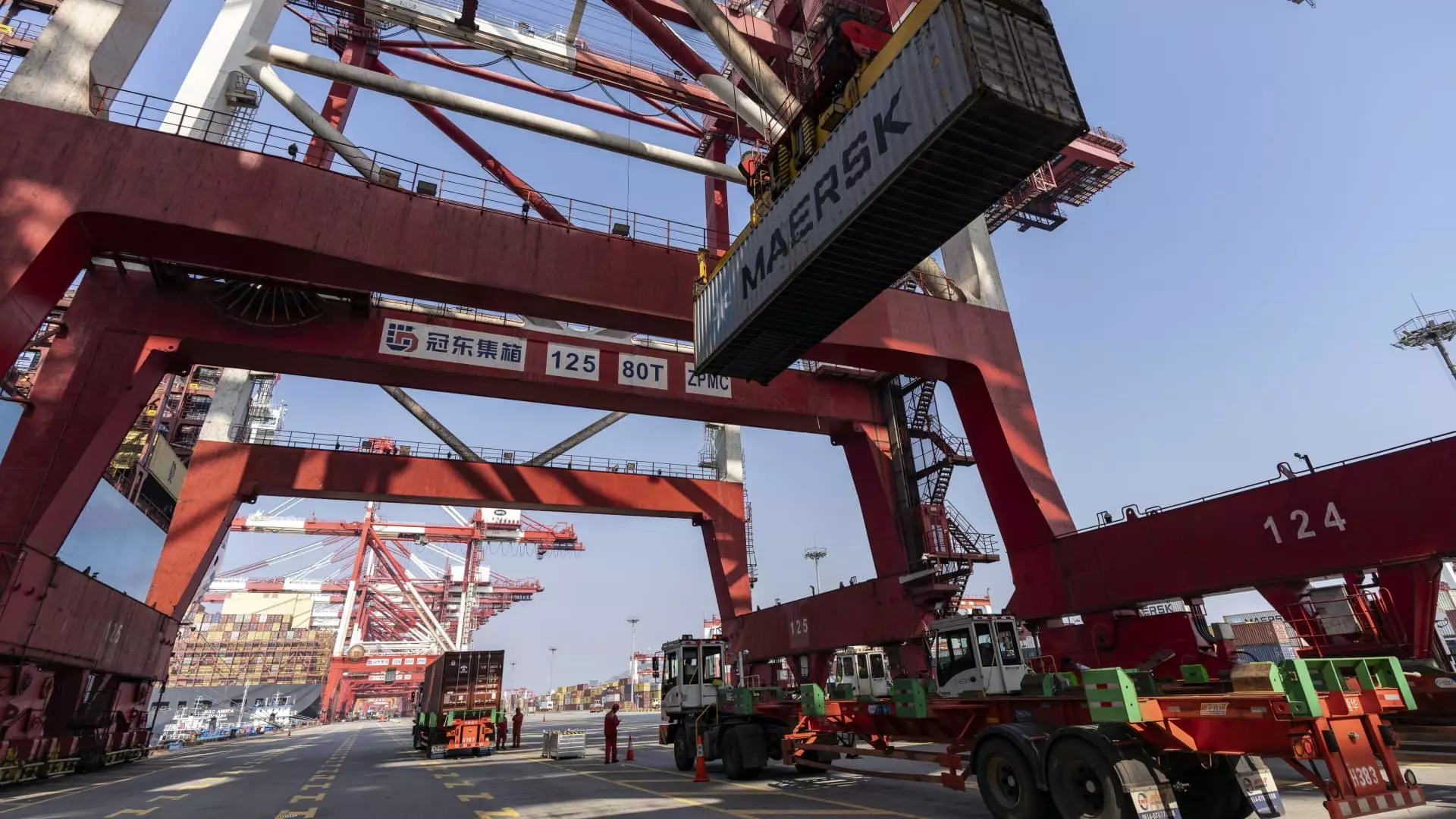China’s economic landscape is currently under scrutiny as recent customs data reveals a downturn in both exports and imports for September. This shift has raised alarms concerning one of the few sectors that has traditionally provided a buffer to the world’s second-largest economy. The results indicate a modest year-on-year export growth of 2.4% in dollar terms, while imports barely crept up by 0.3%. These figures fall short of analyst expectations, who had predicted a more optimistic growth trajectory for both exports and imports.
Faltering Export Growth Amidst Global Dynamics
Analysts had projected that exports in September would surge by up to 6% year-on-year in U.S. dollar terms, accompanied by estimated import growth of 0.9%. The disappointing figures, therefore, underscore a troubling trend. Historically, exports have been a significant driver of China’s GDP growth but are now increasingly jeopardized by a combination of diminished consumer demand and sluggishness in the real estate sector. A noted economist, Zhiwei Zhang, highlighted that escalating trade tensions could inhibit China’s ability to maintain robust export growth as they move into 2024. With the U.S. and European Union imposing increased tariffs on various Chinese exports, including electric vehicles, the road ahead seems fraught with uncertainties.
The data reveals complex interactions between trade partners, with exports to the U.S.—China’s largest trading partner—growing by a mere 2.2% while imports from the U.S. saw a more significant uptick of 6.7%. This discrepancy reflects the evolving dynamics in U.S.-China relations and underscores the interconnectedness of their economies. With a growing focus on domestic legislative measures influencing trade, it is paramount for policymakers to recalibrate fiscal strategies to bolster overall economic stability.
The persistent lackluster consumer sentiment is echoed in the dropping imports of critical resources such as crude oil, which fell by 10.7% year-on-year, indicating a subdued domestic demand potential. However, there are signs that short-term boosts in fiscal spending could stimulate a resurgence in industrial commodities. Zichun Huang, an economist at Capital Economics, notes that a potential increase in the fiscal deficit could bolster construction activities, which might rekindle demand for these essential materials within one or two quarters.
Huang’s insights gain credence with the Ministry of Finance hinting at fiscal expansions to stimulate the economy. While the specific measures remain vague, the implications suggest a forthcoming shift in governmental policy aimed at enhancing infrastructure activities. Such changes should not only invigorate the construction sector but also provide a lifeline to struggling industries that have been adversely affected by declining export orders.
Interestingly, the trade figures display a somewhat varied landscape across different regional partners. Exports to the ASEAN countries surged by 5.5%, while imports increased by 4.2%. Similarly, exports to Russia, a member of the BRICS alliance, experienced a notable increase of 16.6%. These figures indicate strong regional trade ties, suggesting that while challenges from Western economies persist, China may still find growth opportunities in emerging markets.
In contrast, traditional export items, such as shoes, toys, and smartphones, have seen a decline during this period, with the overall growth of auto exports also slowing significantly to just a 25.7% increase. On the brighter side, segments such as integrated circuits and home appliances have exhibited growth, showcasing a shift in consumer preferences and production capacities.
Against this backdrop of mixed trade data, the broader economic metrics offer an equally dismal narrative. The core consumer price index rose merely by 0.1% in September, signaling the weakest inflation performance since February 2021. Even with the recent Mid-Autumn Festival and Golden Week holiday, which typically boost domestic tourism-related prices, the index did not reflect anticipated gains, underscoring ongoing challenges in stimulating consumer demand.
As the National Bureau of Statistics prepares to unveil third-quarter GDP data, investors and market analysts remain cautious. Following subsequent announcements regarding economic stimulus, the market response has been volatile, pointing to uncertainties regarding the efficacy and scale of government intervention. The need for substantive reforms and clear policy signaling becomes increasingly vital as China’s economic trajectory faces mounting pressures.
The trade and economic indicators for China are a clarion call for policymakers to act decisively. Without strategic fiscal maneuvers and a robust approach to managing international trade relationships, the likelihood of a more profound economic slowdown looms ominously in the horizon. The interplay of domestic demand, global trade dynamics, and governmental policies will determine the endurance and resilience of the Chinese economy in the coming quarters.

